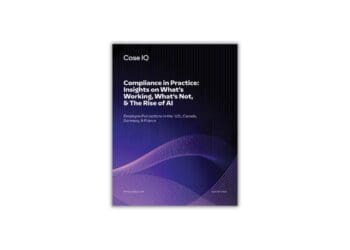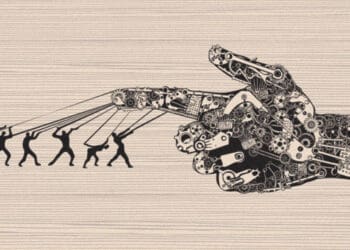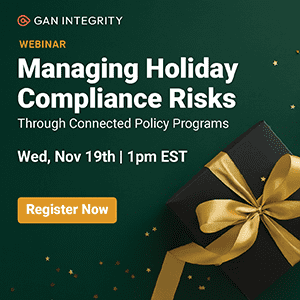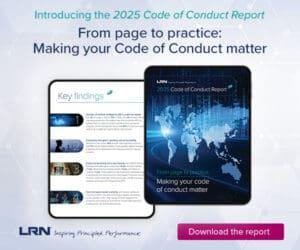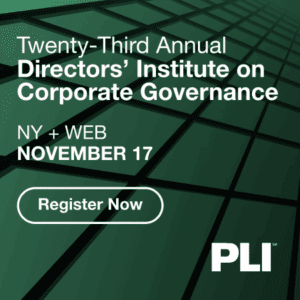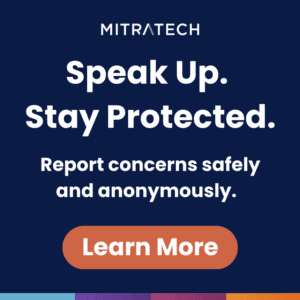Incidents of workplace violence have become so commonplace that they often do not make the news anymore, even when they result in multiple victims. But both workplace homicides and workplace bullying have become more common over the past half-decade. Security consultant Dan Pascale explores employers’ mandates in preventing workplace violence and bullying.
Since 2014, the American workforce has experienced more than 1 million violent crimes every year. According to the U.S. Bureau of Labor Statistics, in 2020 alone, more than 20,000 workers in private industry were assaulted, resulting in lost workdays, and — even worse — 392 workers were victims of workplace homicide. That number rose in 2021 to 481 workplace homicides.
Workplace violence takes a toll on its victims, families and coworkers, often impacting long-term health and inflicting long-lasting emotional trauma. It also results in significant losses in productivity, especially due to missed workdays.
Regardless of whether it’s fatal, violence at work also increases employee stress and burnout, leading to higher turnover rates in certain hard-hit industries. For example, a 2021 study found that almost half of U.S. teachers are interested in quitting or transferring over concerns about violence against educators.
The National Institute for Occupational Safety and Health considers four types of incidents to fall under the umbrella of workplace violence: criminal intent, customer/client, worker-on-worker and domestic relations. The variety of scenarios that can give rise to violence in the workplace must be an important consideration for any business updating its policies, procedures and mitigation/response plans in order to enhance the safety of its workers. This is especially true because violent workplace incidents can be perpetrated both by outsiders — be it enraged customers, criminals or aggrieved domestic partners — and by current or former employees.
Psychological violence also creates an unsafe workplace
Physical violence isn’t the only threat. Awareness is growing about the harm caused by workplace psychological violence, such as bullying or mobbing. It is, perhaps, tempting to assume that psychological violence is not as significant a threat to the workplace as physical violence.
But there are good reasons to take psychological violence seriously. First, it has the potential to escalate to physical violence. Second, it creates a difficult work environment for everyone and contributes to productivity loss, including stress-related illnesses, absenteeism and presenteeism.
Examples of psychological violence include bullying and ganging up or mobbing. Workplace bullying is frequent, and there is a rising trend in bullying-related complaints. Almost 50 million Americans (30% of the workforce) have reported being bullied at work, and it’s growing more common. Bullying can take on many forms, including cruel, vindictive and humiliating behaviors, undermining individuals in group settings, shouting and throwing things and constant criticism. Ganging up or mobbing are group behaviors and include gossiping and spreading malicious false information, ostracizing and making jokes at a coworker’s expense.
If psychological violence is tolerated and goes unchecked, it risks creating a toxic workplace environment that feels unsafe, even to those not subjected to bullying directly.
How Robust Compliance Programs Can Ensure Worker Safety
Compliance departments are certainly familiar with in-office safety training, but what about when the office doesn’t exist yet? The construction industry, while a hot job market at the moment, has one unfortunately common risk: worksite injuries and even deaths.
Read moreDetailsFactors contributing to the rise in occupational violence
Certain industries, such as retail, transportation, healthcare and education, are particularly vulnerable to workforce violence due to high stress and high levels of interaction with the public. For example, a 2022 meta-study found that 59% of healthcare workers in hospitals and other medical settings have experienced workplace violence.
But the threat of violence is not confined to these high-stress, high-touch industries — it is plaguing virtually every corner of the American economy. It’s unsurprising that the current rise in workforce violence is reflected by nationwide data, though there is dispute on whether violent crime is up nationally.
But many factors could contribute an increase in violence, including:
- Economic conditions, inflation and an increased sense of economic instability
- Pandemic-related social isolation and fraying of community ties
- Social and political polarization
- Access to weapons, both legal and illegal
- Increasing abuse of alcohol and use of illegal drugs
- Mental health challenges and inadequate access to services
- 24/7 news cycle that fosters a perpetual feeling of crisis in some individuals and can ignite social unrest in moments
- Domestic terrorism
In addition to the factors listed above, the pandemic has created a new set of safety challenges for the business community:
- Remote and hybrid workforces loosen the social bonds between colleagues and can prevent the socialization and relationship-building of new employees.
- Schedule inconsistencies, rotating days off and split schedules lead to uncertainty about who’s supposed to be in the office on what days and who does what on a given day.
- Many workplaces have reduced the space they physically occupy or reconfigured the layout of their facilities, and some have started sharing their space with other businesses to reduce overhead costs, adding to the confusion as to who belongs on the premises and who does not.
Awareness of these factors is essential in realistic safety planning. Understanding your business’s vulnerabilities to these factors will help mitigate the threat to your employees, customers and vendors and create a more secure environment.
Identifying and addressing warning signs
Acts of workplace violence are frequently preceded by behaviors that give rise to discomfort in others. For example, survivors of workplace shootings committed by coworkers often report seeing behaviors that had caused them concern prior to the shooting, such as displays of aggression and hostility, disruptiveness, prolonged bouts of anger, withdrawal from social interactions, being hypersensitive to criticism and holding grudges. In criminal-intent incidents, perpetrators may give themselves away by loitering in a place where they have no good reason to linger. In domestic violence scenarios, stalking and harassing behaviors of a domestic partner should not be overlooked as a potential precursor to workplace violence.
Creating an environment where employees’ concerns are taken seriously and putting in place a process for reporting alarming behaviors and addressing them promptly while maintaining the reporting employee’s anonymity can help reduce the chances of a violent incident.
Meeting federal employer obligations
The Occupational Safety and Health Administration (OSHA) has recently stepped up its inspections and enforcement, especially for industries where workplace violence is common. To lessen the risk of an OSHA citation after a workplace violence incident, employers should review OSHA’s recommendations for workplace violence prevention programs to ensure they follow OSHA’s guidance.
While many state OSHA agencies have rules for workplace violence for specific industries and sectors, there are currently no specific federal OSHA standards for workplace violence. In its citations and other enforcement actions, OSHA primarily relies on the General Duty Clause, Section 5(a)(1) of the Occupational Health and Safety Act. The General Duty Clause compels employers to provide employment conditions free from recognized hazards that are causing or are likely to cause death or serious physical harm to employees.
For a workplace violence incident to be considered a “hazard” under the General Duty Clause, there had to have been some employer knowledge so that the employer could have taken preventive measures.
Take stock of the evolving workplace violence landscape, including the factors currently driving violent behaviors and how these factors may impact your industry and business specifically. This process can identify risk elements that are foreseeable and should be mitigated.




 Dan Pascale is CEO of COSECURE, law firm Cozen O’Connor’s security consulting business. He is a board-certified security and emergency management professional, with more than 25 years of experience as a practitioner, consultant, instructor, trainer, keynote speaker, author and volunteer leader.
Dan Pascale is CEO of COSECURE, law firm Cozen O’Connor’s security consulting business. He is a board-certified security and emergency management professional, with more than 25 years of experience as a practitioner, consultant, instructor, trainer, keynote speaker, author and volunteer leader. 